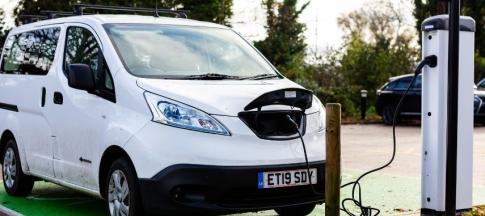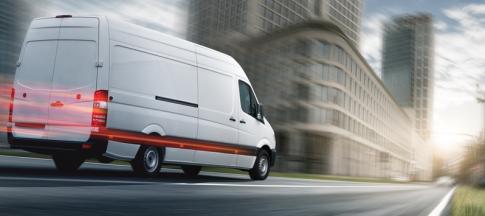Get the lowdown on Clean Air Zones, including how they work, how you pay and what happens if you forget to pay...

There’s no doubt that poor air quality in our towns and cities is a huge cause for concern. Health issues caused by vehicle pollution are reportedly on the rise and the government’s Air Quality Plan and ‘Road to Zero’ (the aim is to achieve zero emission road transport) are dictating strict targets on the improvements required in the quality of the air that we breathe.
To reduce pollution levels generated by vehicles, the Department of Transport (DfT) is supporting local authorities in the introduction of Clean Air Zones (CAZs) to our towns and cities. According to the DfT, the areas are designed to “shape the urban environment in a way that delivers improved health benefits and supports economic growth.”
Operators of older, more polluting vehicles are being financially penalised if they continue to drive into London and some other cities, and these Clean Air Zones are being added to, and in at least one instance extended, every year.
So, how do these zones work, how much do you have to pay to drive within their boundaries, and can you avoid the charges altogether? And what happens if you forget to pay?
What do I need to know about Clean Air Zones?
The rules differ slightly from city to city, but let’s take a look at the London Ultra Low Emission Zone (ULEZ), the first to be introduced in the UK and which has been operating for some time now.
- The London ULEZ came into being on 8 April 2019
- The extent of the zone was initially the same as that of the existing central London congestion charge zone. (It’s important to remember that the congestion charge is separate from any ULEZ fees and still needs to be paid)
- There are no barriers, but road signs clearly indicate where the zone boundaries are located
- The zone is monitored by cameras which will identify any vehicles to which the charge applies but has not been paid
How much will it cost me? Is there any way of avoiding the charge?
As the charges have been introduced to keep the more polluting vehicles out of the city centre, newer vans (those registered after September 2016) which conform to the Euro 6 emission standard can enter the zone without charge. Electric vans and most hybrid vehicles are also exempt.
You can check your own van to see you need to pay the ULEZ charge on the government website.
- If your van doesn’t meet Euro 6 emission standards, you’ll have to pay the daily charge, currently £12.50. If you drive into central London every working day, that’s around £275 per month
- Payment can be made online or by phone
- You need to pay in advance, or no later than three days after your journey
As you might expect, there are hefty penalties should you forget to pay the charge. You’ll receive a Penalty Charge Notice (PCN) for £160 for every day you enter the zone.
It looks like I’m unaffected. Is this going to change?
From 25 October 2021 the London ULEZ will cover a much wider area, bordered by the North Circular Road (A406) and the South Circular Road (A205). Those roads themselves fall outside of the new ULEZ.
There’s no doubt that this expansion will see the owners of vans that don’t comply with Euro 6 emissions carefully considering their options. If they don’t venture into the zone too frequently it might work out more economical to keep their old van and just pay the charge as and when required.
But for the many whose work will take them into the ULEZ on a daily basis upgrading their van to a later model is likely to be the only viable option.
Other cities who have committed to the introduction of a clean air zone and who are at various stages of implementation include Birmingham and Bath (both already in operation), Bristol, Bradford, Newcastle, Gateshead, North Tyneside and Greater Manchester.
There’s little doubt that many more will follow, although, after spending over a reported £11.5 million in preparation, Leeds have scrapped their plans after seeing an improvement in air quality.
If I’m going to have to upgrade my van, what can I do to futureproof against more changes?
There are a number of categories of Euro 6 emissions, the latest going under the guise of Euro 6C, 6D or 6d-TEMP. It seems unlikely that future clean air zones will differentiate between these classifications.
Where we could see developments is the introduction of ‘Zero Emission Zones’ and some London boroughs have already received guidance on this from the government. In these areas, only battery powered electric vans will be permitted without the owner having to pay a charge.
All other vans, including hybrid powered vehicles will be liable to a fee to enter the zone and eventually may not be allowed in at all.
There’s a clear argument to consider buying or leasing a new electric van so you’re not restricted by the introduction of new zones. Ranges and payloads are much improved on the latest crop of purely battery powered commercial vehicles.
Our guide to electric vans looks at what’s on the market now, and what’s just around the corner.
I started my career selling vans in the mid-eighties, progressing through dealer groups to management level. In 2010 I joined vehicle valuation company CAP, being made responsible for forecasting future used values for all makes and models of vans and trucks, this data being used by leasing companies and manufacturers to assess future risk. This role entailed very early exposure to new models including extensive testing across Europe.
In 2016 I started up my own consultancy business dedicated to the LCV industry. In addition, my freelance written work has been used by a number of clients and I am a regular contributor to WhatVan? magazine. I’m also a judge for their annual ‘Van of the Year’ awards.
To relax, I enjoy travel and walking near my Yorkshire home.



